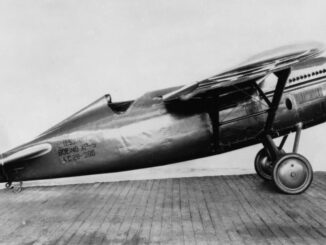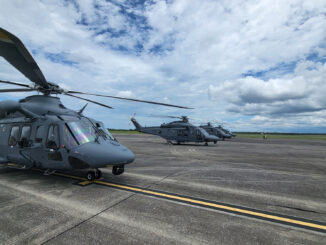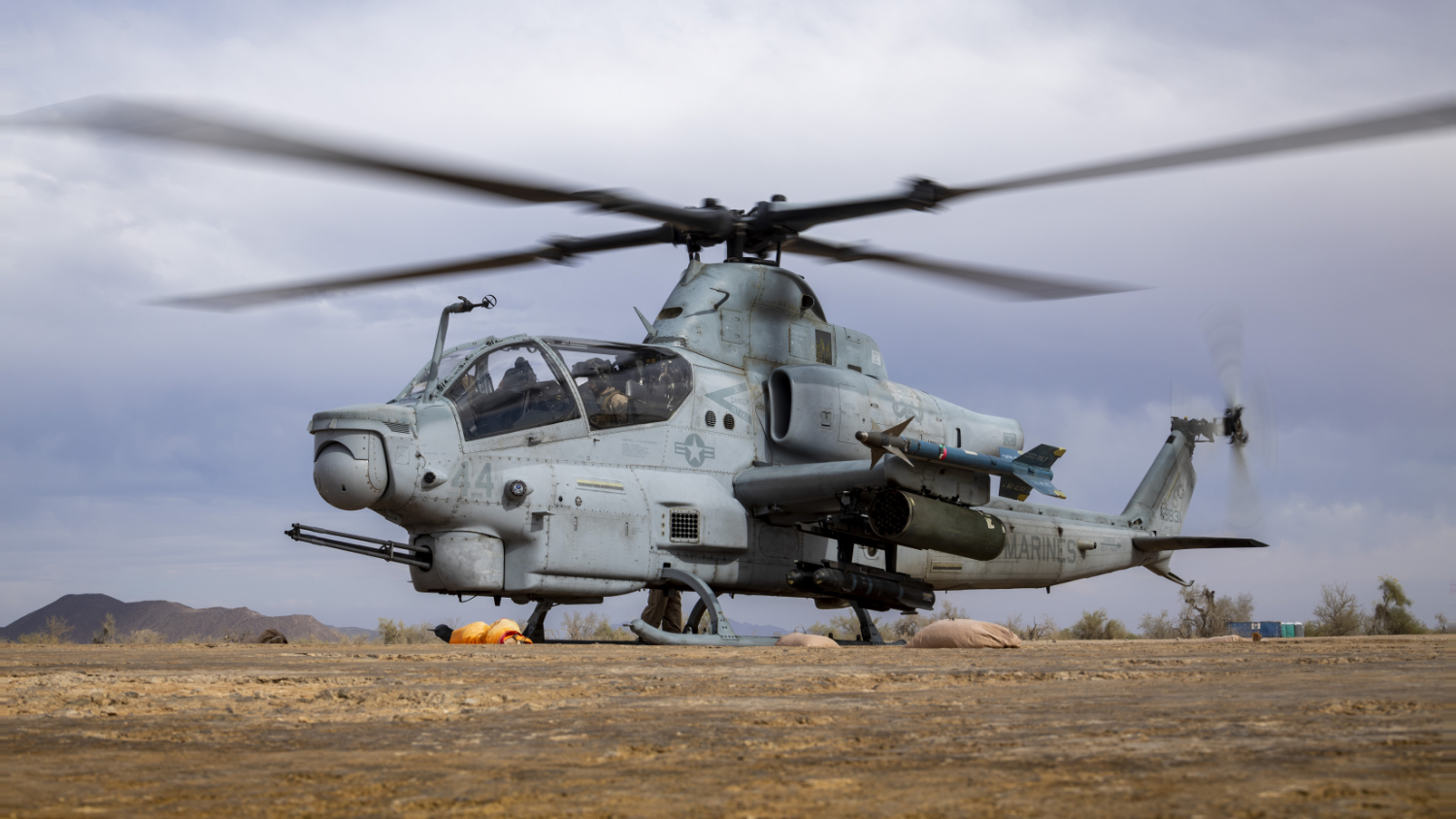 In the middle of April 2025, the US Marine Corps helicopter crews took part in the Forward Arming and Refuelling Point (FARP) training, within the Weapons and Tactics Instructor (WTI) course 2-25 organised by the Marine Aviation Weapons and Tactics Squadron One (MAWTS-1).
In the middle of April 2025, the US Marine Corps helicopter crews took part in the Forward Arming and Refuelling Point (FARP) training, within the Weapons and Tactics Instructor (WTI) course 2-25 organised by the Marine Aviation Weapons and Tactics Squadron One (MAWTS-1).
This WTI course is a seven-week training event hosted by the MAWTS-1 at its training grounds in Yuma, Arizona and Mesquite, California. The course is focused on operational integration of six functions of the Marine Corps aviation in support of the Marine Air Ground Task Force (MAGTF) – Offensive Air Support, Anti-Air Warfare, Assault Support, Air Reconnaissance, Electronic Warfare, Control of Aircraft and Missiles.
Within the US Marine Corps, the Offensive Air Support is defined as all kinds of air operations conducted against facilities, installations and personnel of the enemy, aimed to destruction or isolation of the aforementioned resources and performed in assistance to MAGTF objectives.
The Anti-Air Warfare includes all operations conducted against both enemy air force and air defence of enemy, including aircraft, airfields, radars, defence systems and their support facilities. The Assault Support provides operational and tactical mobility as well as logistics support to the MAGTF, including such tasks as air delivery, combat assault transport, air evacuation and tactical recovery of aircraft and personnel.
The purpose of Aerial Reconnaissance is to gather information about the enemy on both tactical and strategic levels. The Electronic Warfare tasks consist of the three main sections: Electronic Attack, Electronic Warfare Support and Electronic Protection. And, last but not least, the Control of Aircraft and Missiles means coordinated use of all the US Marine Corps resources, personnel and procedures to plan and control the combat efforts of the MAGTF.
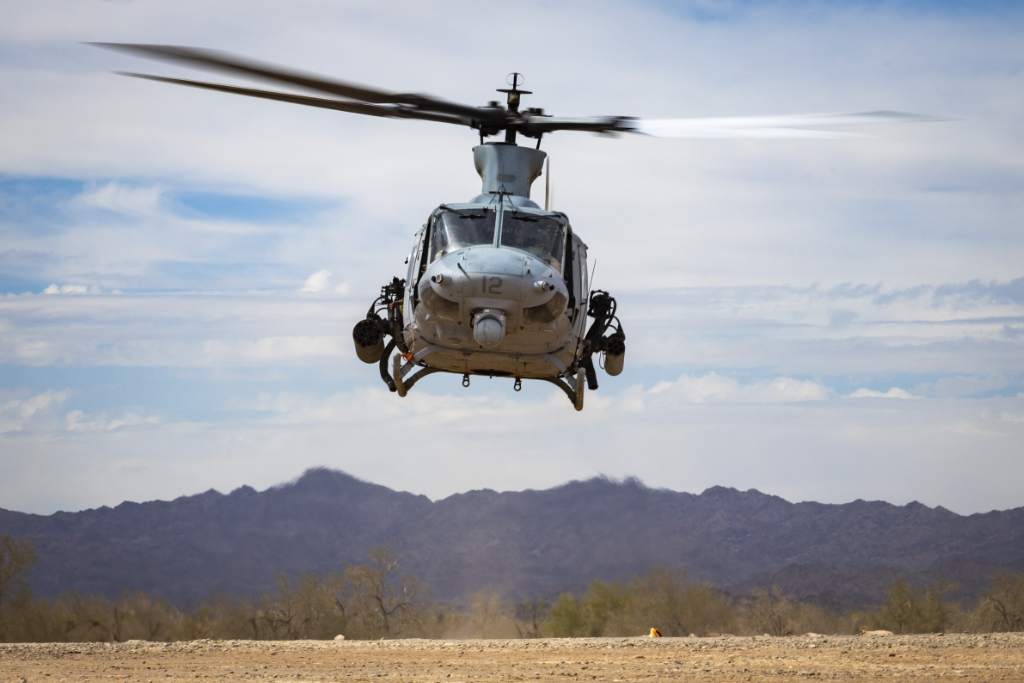
According to the official US Marine Corps statement, the aforementioned WTI course provides standardised advanced tactical training and certification of unit instructor qualifications to support Marine aviation training readiness and assists in development and employment of aviation weapons and tactics. During the training, the WTI instructors serve as squadron training officers who use their skills to act as aircraft and weapons subject matter experts. They provide their units with proper training and evaluation to ensure exceptional combat readiness.
One of the procedures trained at the WTI course 2-25 for UH-1 Venom and AH-1Z Viper pilots, was the practical application of the FARP, which was conducted in the middle of April at Mesquite training grounds.
The FARP is a temporary facility organized, equipped and deployed to provide fuel and ammunition necessary for the employment of aviation manoeuvre of units involved in combat. As stated by the US military authorities, the FARP capability is doctrinally defined and aimed to provide fuel and ordnance for all kinds of aircraft, that are unable to re-fuel in the air, therefore extending its operational range and minimalizing the time for return into the combat zone.
Apart from the FARP training, the WTI course 2-25 also included – according to the official releases of the US Marine Corps – a simulated tactical recovery of aircraft and personnel, close air support exercise and KC-130 tactical airlift training.
More information about the FARP can be also found in our article from February of 2020 – FARP makes its debut in Arctic.
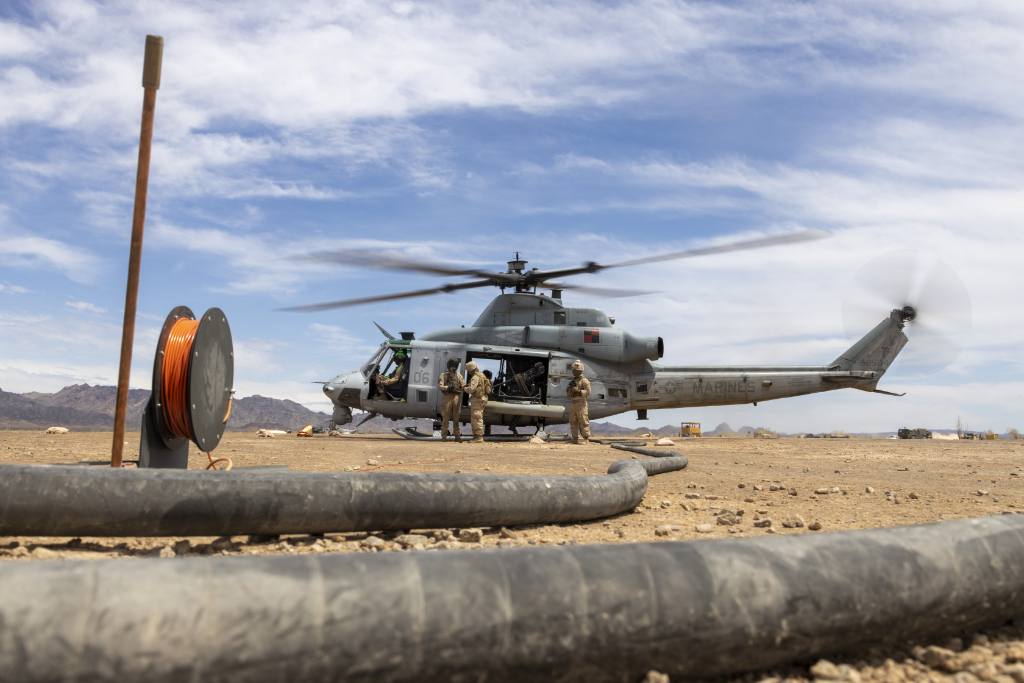
Cover photo: US Marine Corps AH-1Z Viper pilots assigned to MAWTS-1, prepare for takeoff from a forward arming and refueling point as part of Weapons and Tactics Instructor course 2-25 at Mesquite, California, April 14, 2025. (US Marine Corps photo by Lance Cpl. Adam Scalin)
All photos by Lance Cpl. Adam Scalin, US Marine Corps © U.S. Department of Defence (DoD). DoD information materials were used, in compliance with Public Domain licence. The appearance of U.S. Department of Defense (DoD) visual information does not imply or constitute DoD endorsement.

